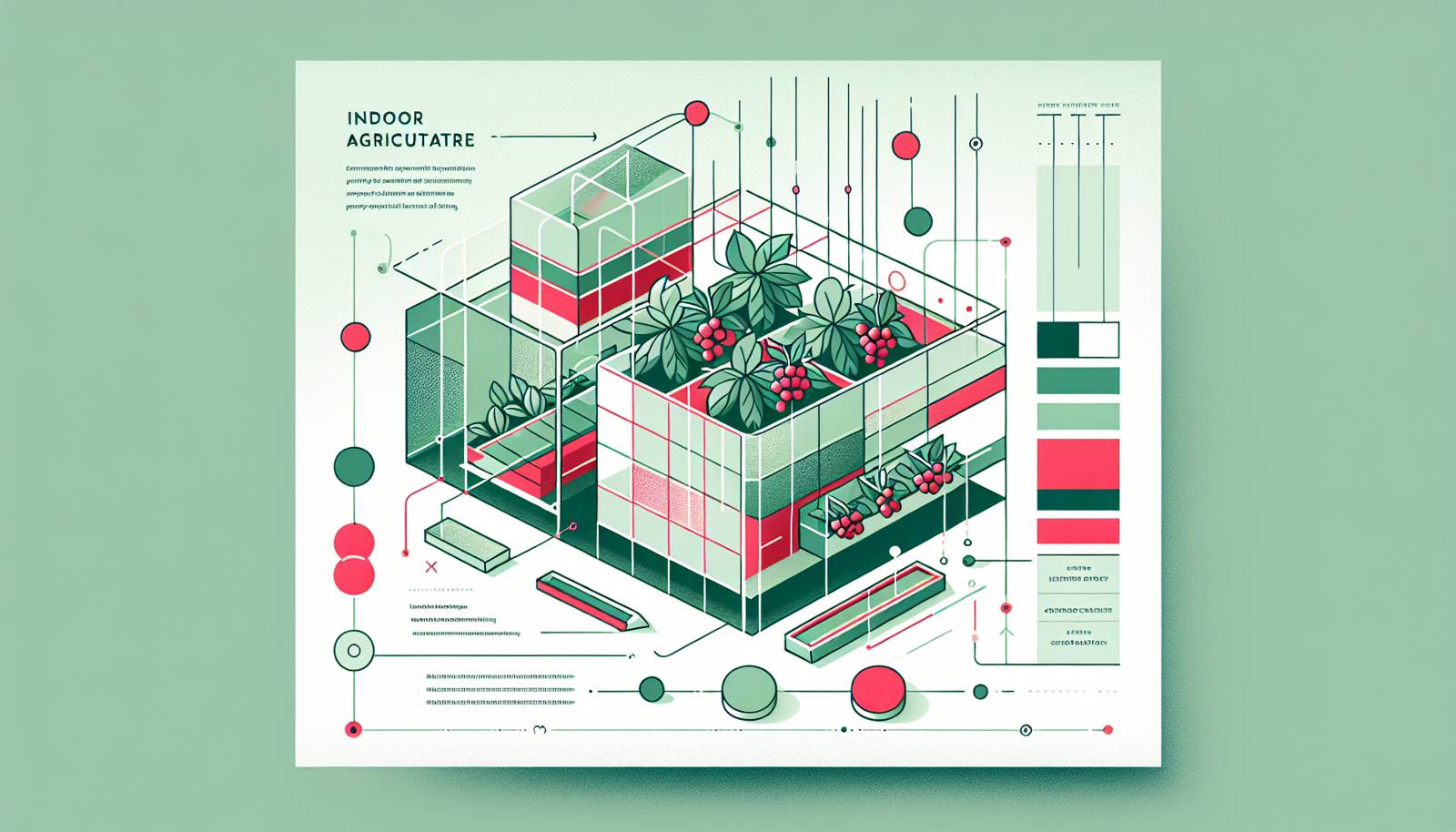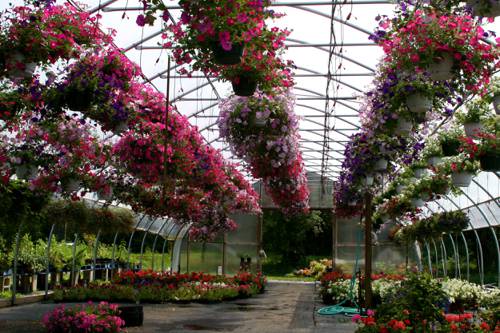
FAQ About Indoor Berry Plant Cultivation

What types of berry plants are suitable for indoor cultivation?
Several types of berry plants are well-suited for indoor cultivation. Strawberries, raspberries, and blueberries are among the most popular choices. Additionally, dwarf varietals of blackberries and gooseberries can be grown indoors. For success, select varieties that are bred for compact growth, such as 'Alpine strawberries' or 'Top Hat' blueberries.

What are the key factors to consider when growing berries indoors?
When growing berries indoors, consider lighting, temperature, humidity, and soil type. Berries need ample light, ideally 10-12 hours a day, which can be supplemented with grow lights. They prefer temperatures between 65-75°F. Maintain humidity around 50-70% and use well-draining, slightly acidic soil.

How can I provide sufficient light for indoor berry plants?
Natural sunlight can be limited indoors, so using full-spectrum LED grow lights is an effective way to ensure your berry plants receive enough light. Position the lights close to the plants and set them on a timer to mimic natural daylight, giving your plants about 10-12 hours of light daily.

What watering techniques are best for indoor berry plants?
Indoor berry plants should be watered evenly to maintain moist soil, but not waterlogged conditions. Allow the top inch of soil to dry out between waterings. Use pots with drainage holes and consider adding a layer of gravel at the bottom to improve drainage.

What are the common pests that affect indoor berry plants?
Common pests that may affect indoor berry plants include aphids, spider mites, and whiteflies. Regularly inspecting your plants and using insecticidal soap or neem oil can help control these pests. Ensuring good air circulation and humidity can also deter pest infestations.

How can I encourage fruit production in indoor berry plants?
To encourage fruit production, ensure your berry plants receive adequate lighting and nutrient-rich soil. Pollination can be enhanced by gently shaking the flowering branches or manually transferring pollen with a brush if needed. Ensure consistent watering practices and proper pruning to promote healthy growth.

Are there specific varieties of strawberries that grow well indoors?
Yes, certain strawberry varieties grow especially well indoors, including 'Alpine strawberries' and 'Tristar.' These varieties are day-neutral, meaning they can produce fruit continuously under the right conditions, which is ideal for indoor environments.

Can indoor berry plants be grown from seeds, or is it better to use another method?
While it's possible to grow berry plants from seeds, it is often easier and faster to start with seedlings or bare-root plants. These methods allow you to enjoy berries sooner, as they bypass the germination and early growth stages, which can be more challenging indoors.

How important is humidity for indoor berry plant cultivation?
Humidity plays a significant role in indoor berry cultivation. Most berry plants thrive in humidity levels between 50-70%. Low humidity can lead to dry plants and pest problems, while high humidity might encourage fungal growth. Using a humidifier or pebble tray can help maintain ideal humidity levels.

What type of soil is best for growing indoor berry plants?
Berries generally prefer well-draining soil that is slightly acidic. A mixture of peat moss, perlite, and potting soil is often recommended. You can also use commercial potting soil designed for acid-loving plants if available. Regularly check the soil's pH and adjust if necessary.

Can I grow multiple berry plants together in the same pot indoors?
While it is possible to grow multiple berry plants in the same pot, it is essential to ensure the container is large enough to accommodate their root systems and prevent crowding. Each plant should have ample space for root expansion and air circulation to avoid disease and nutrient competition.

What container size is suitable for indoor berry plants?
The size of the container depends on the berry type being grown. Generally, a container of at least 12 inches in diameter is suitable for most small berry plants like strawberries. Larger plants, like blueberries, may require pots of 16 to 20 inches or more to support their growth.

Are there any special fertilization requirements for indoor berry plants?
Indoor berry plants benefit from regular fertilization during the growing season. Use a balanced, water-soluble fertilizer high in phosphorus to promote fruit development. Fertilize every 4-6 weeks, but decrease applications as the plants go dormant in winter to prevent over-fertilization.

How long does it typically take for indoor berry plants to produce fruit?
Time to fruit production varies depending on the berry type and growing conditions. Strawberry plants generally produce fruit within 3-4 months, while blueberries and raspberries may take a year or more. Using mature plants or cuttings can accelerate this timeline.

What is the best temperature range for growing berry plants indoors?
The optimal temperature range for indoor berry cultivation is between 65-75°F. This range supports growth while preventing stress on the plants. Avoid exposing the plants to extreme temperature changes or drafts, which can negatively affect their health and fruit production.

Do indoor berry plants require pruning, and how should it be done?
Yes, indoor berry plants do require pruning to ensure healthy growth and maximize fruit production. Remove dead or diseased branches, and trim back any overgrown areas to improve air circulation. Pruning is best done during the dormant season for most berries.

Can I grow citrus berries indoors, and if so, how?
Citrus plants, such as calamondin oranges, are generally not considered berries but are suitable for indoor growth. They require similar conditions as berry plants, including good light and humidity levels, and can be grown in containers with well-draining soil. Pruning and regular fertilization also support healthy indoor citrus growth.

What common mistakes should I avoid when growing berries indoors?
Common mistakes include overwatering, insufficient lighting, and using the wrong type of soil. Overcrowding plants and neglecting pest control can also lead to problems. Always ensure the containers provide adequate drainage, and closely monitor the plants' health for signs of stress.

Is it possible to grow tropical berries indoors, and which varieties are best?
Yes, it is possible to grow certain tropical berries indoors with proper care. Acai and goji berries are two examples that can thrive indoors. These plants require specific humidity, light, and temperature conditions which mimic their native environments. Adequate space for their growth is also important.

How can I recycle potting soil for indoor berry plants?
Recycling potting soil can be done by first removing any old roots and debris, then mixing with fresh soil and adding organic matter or compost to replenish nutrients. Ensure the pH is suitable for berry cultivation and consider sterilizing the soil to eliminate any pathogens before reuse.
